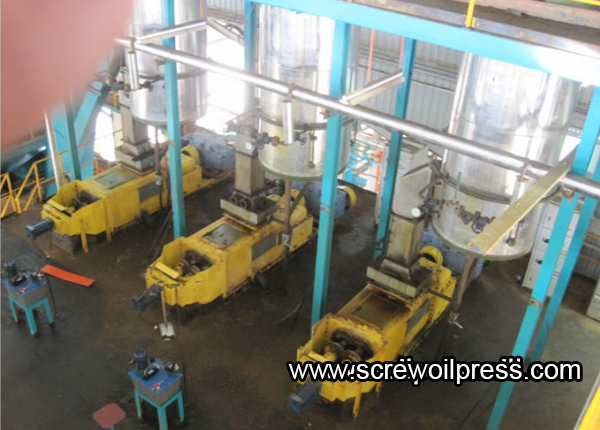- Oil Mill Machinery
- Oil Refinery Machinery
- Oil Processing Plant
- Solvent Extraction Plant
- Animal Oil Processing Machine
- Feed Processing Machine
- Palm Oil Mill
- Industrial Drying Machine
- Grain Processing Machinery

NEWS
What Are The Factors That Affect The Oil Extraction Rate?
Time:Tue-11-21 hits:

Different machines and different pressing processes have different oil yields. There are many factors that affect the oil yield. Today, I will mainly explain the main points.
Affecting the oil output rate includes the following aspects:
1. Raw materials: The quality of raw materials is the key to oil yield. The factors that affect oil crops can be divided into: oil quality, variety, fullness, dry humidity, etc.
2. Oil press equipment: It is very important to choose the right oil press. And the oil press used for different oils is also different. For example, screw presses are preferred for peanut oil presses. Sesame oil presses generally choose hydraulic oil presses.
Among them, the working pressure of different oil press equipment, the slag content of the equipment and the residual oil rate of the dry cake are also different.
The higher the working pressure of the oil pressing equipment, the higher the oil output rate, the lower the slag content, the higher the oil output rate, and the lower the residual oil rate, the higher the oil output rate.
3. Oil pressing process
The oil extraction process is generally divided into a cold extraction process and a chemical extraction process (solvents are generally used).
The cold-pressed oil process is to use an oil press to extract directly. This kind of oil yield is the least. There are still many oil residues remaining in the oil residue.
The chemical solvent oil extraction process is based on cold pressing, fully analyzing the oil, and obtaining the most oil.
4. The method to increase the rate of oil production
(1)Peanuts: soak the peanut kernels before frying the seeds, add appropriate amount of water during the process of frying the seeds, so that the kernels maintain good softness and sufficient moisture, stir-fry the kernels until they reach eighth maturity, and pinch the kernels by hand to reach the kernels. The skin is separated, and the kernel can be squeezed by breaking into two petals. The thickness of the cake is 0.7mm, and the cake is in the shape of long wrinkles. The oil flows smoothly.
(2)Sesame seeds: stir-fry the seeds until they are light gray before pressing, and there is a phenomenon of popping. When the seeds are pinched by hand, the oil will flow out. When the seeds are fried, use high fire to fry the seeds, the temperature is 120-150 degrees, and the cake thickness is 0.7-1.5 mm. The seeds are properly fried, the oil flows smoothly out of the cake, there is basically no residue in the oil, the cake is in the shape of a long strip, and the cake is squeezed dry.
(3) Cottonseed kernels: fry the oil until light yellow before pressing, the temperature is 120~130 degrees, and the cake thickness is 1-1.5 mm (the water content in the south and the north are different, and the water content is properly controlled).
(4)Soybeans: Fry until bursting and edible before being pressed, the temperature is 120~130 degrees, and the thickness of the cake is 0.7 mm. Squeeze it dry once, but the squeezed-dry cake is over-coked, causing a great loss of protein.
Generally, a two-time squeezing process is used. Stir-fry the soybeans until they reach the sixth or seventh maturity. The squeezing temperature is 80-100 degrees, and the moisture content is about 5-6%. The thickness of the first pass is 1.52 mm, and the thickness of the second pass is 0.7 mm. The cake is long and wrinkled. , High oil yield and large processing capacity.









